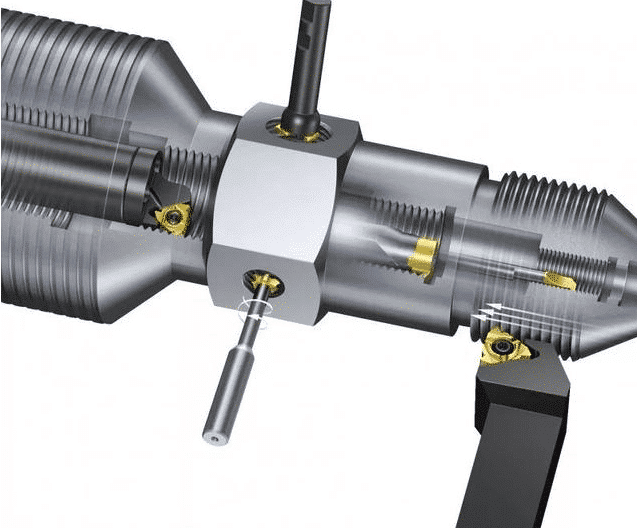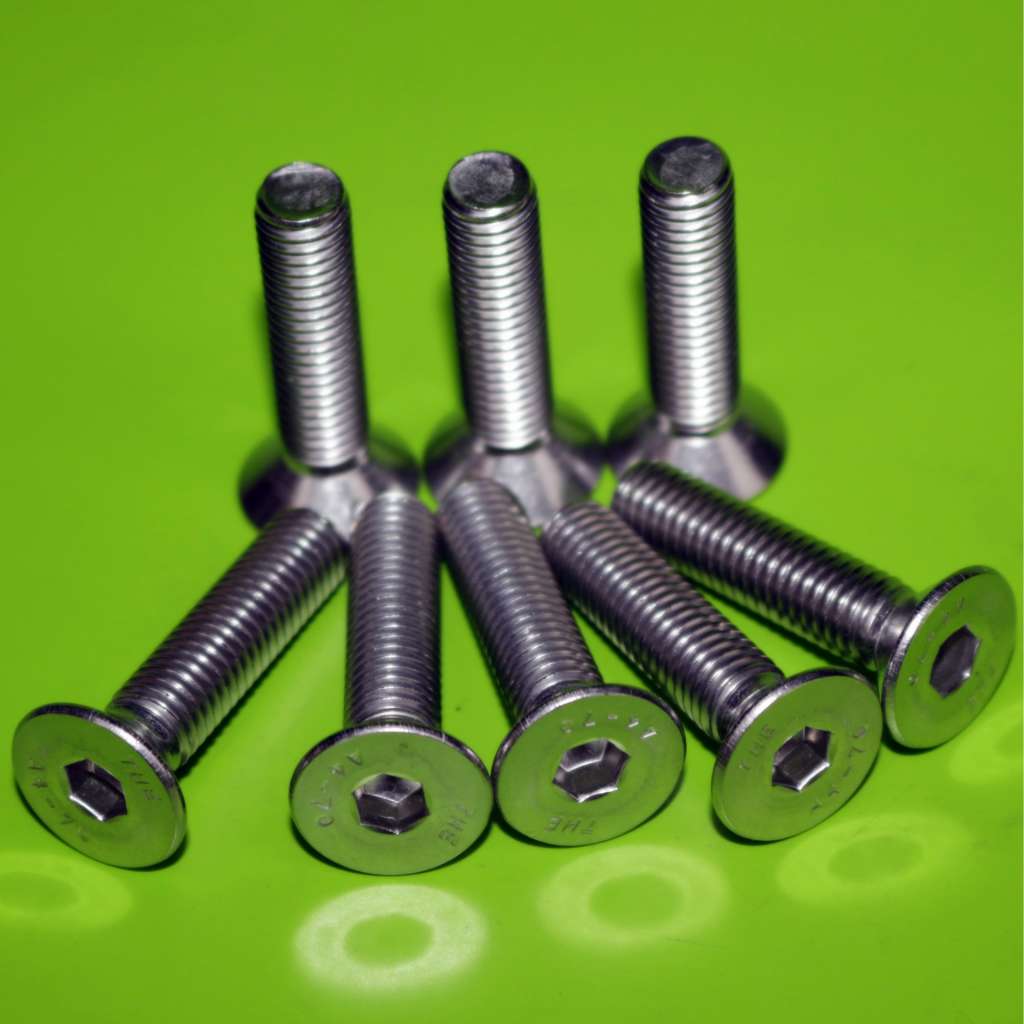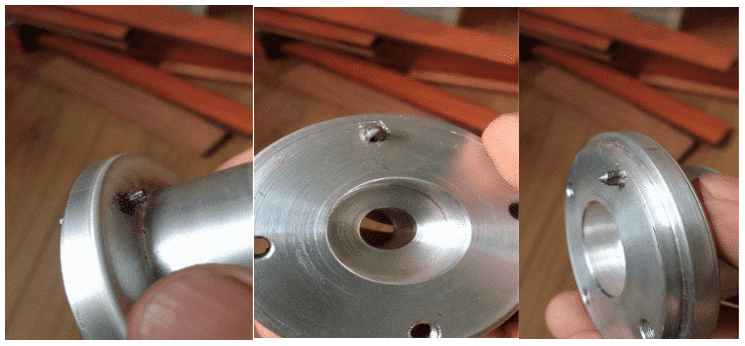With the booming development of cnc program for thread milling, especially the advent of 3-axis linkage CNC machining center, now CNC thread milling process is gradually gaining wide acceptance from mechanical processing industry.
Besides, threads, as it’s commonly known, can be obtained by our familiar traditional thread-making methods, among which tapping is the most similar to thread milling. Because they are both to form threads through a relative rotational movement between tools and workpiece. So how to select a proper way from them when facing different working condition? Here is the guide telling you what exactly they are and what they are good at.

condition of applying CNC thread milling:
1. Three-axis linkage (or above) machining center
2. Thread length not exceeding 3 times the cutting edge of the tool

Advantage of CNC thread milling
1. A thread milling cutter can machine threads with different diameters and the same shape.
For example, the thread of M15x1.0, M18x1.0, M20x1.0 is processed by changing the interpolation radius with a thread milling cutter, which can reduce the number of tools, save tool change time, improve efficiency and facilitate tool management.
2. Thread accuracy and finish are improved.
Thread milling is done by high-speed rotation of the tool and spindle interpolation. The cutting method is milling, the cutting speed is high, and the processed thread is beautiful; the tap cutting speed is low, and the chip is long, which easily damages the inner hole surface.
3. Internal thread discharge is convenient.
Milling thread belongs to chip breaking, the chip is short, and the diameter of the machining tool is smaller than that of the machining thread hole, so the chip removal is smooth; while the tap is continuous cutting, the chip is long, and the diameter of the tap is as large as the machining hole, so the chip removal is difficult.
4. If you use a tap, you can of course use the electric spark to break the broken branch, but the process will be very complicated, and if the damage is caused to the part, it will be lost due to small.
If a thread milling cutter is used, first of all, because the force is small, it is not easy to break; even if it is broken, since the machining hole diameter is larger than the tool diameter, the branch can be easily taken out. In terms of product yield, thread milling is much higher than taps.
5. It is not easy to form sticky chips.
For softer materials, it is easy to produce sticky chips during processing, but thread milling rotates at high speed and chip breaking. The tap cutting speed is low, and the full thread and the machined surface act, which is easy to cause sticky chips.
6. The machine power is required to be low.
7. Because thread milling is chip breaking, the tool is partially contacted, the cutting force is small, and the tap is full thread contact, the force is large, and the machine requires a large power.
8. Tool breakage is easy to handle.
Firstly, the thread milling cutter has a small force and rarely breaks. If it occurs, because the machining aperture is larger than the cutter, the broken portion is easy to take out; and the tap is subjected to large force, the chip removal is not smooth, and it is easy to break, and the large hole after breaking. It’s a bit easier to handle, and it’s very troublesome if it’s a small hole, like:
a. When machining ordinary threads, thread milling is not cost-effective considering the cost per piece. Ordinary threads are classified as threads with a general hardness of <50 HRC and a diameter of <38 mm, although this is not an obvious dividing line. Ordinary taps are generally high-speed steel materials, the market price is tens of dollars, but the thread milling cutter is more than 10 times its price, and the life of a single piece cannot reach more than 10 times.
b. The aspect ratio cannot be too large, and generally requires L/D<3. Because the thread milling cutter has a single-sided force, the long-diameter ratio will produce a taper when the thread is too long, and the cutter is easily broken.
application of CNC thread milling
1. High-hard material processing (hardness >50HRC), suitable for thread milling, because milling is chip breaking, local contact tool is small, and the blade is made of cemented carbide, so the wear is small and the service life is long; The general high-speed steel wire cone can not be processed at all, such as the use of solid carbide taps, the price is not cheap, and the price of thread milling cutters is similar. According to our existing processing experience, the efficiency and economy of thread milling are absolutely higher than that of taps.
2. Composite hole (with chamfer) Machining is also suitable for thread milling. Thread milling cutter has many functions, which can be integrated into thread and chamfering.
3. Thin wall machining, suitable for thread milling, thread milling cutter processing force is small, so the deformation is small. In addition, the bottom hole can be made flat, and the thread can be close to the bottom, so the space required is small.
4. For machining with high thread precision, thread milling has high thread speed, good chip removal, high thread precision and high finish, and is more suitable for thread milling.
5. Soft material, titanium alloy processing, suitable for thread milling, because thread milling cutter is not easy to produce sticky debris.
For unstable cutting, the thread milling cutter is completely capable of adapting to the processing of this condition because its cutting principle itself is intermittent milling.

Riepilogo
1.Mold manufacturing. The mold is precision machinery and the production cost is high. Therefore, in order to ensure accurate hole pitch and full thread profile, the thread in the large mold is machined to ensure the quality of the workpiece.
2.Non-rotating or asymmetrical parts Due to the asymmetrical shape of the parts, the first difficulty encountered with the thread turning method is the clamping, and the precision of the machining can be guaranteed. 3, large pupil diameter and interrupted cutting.








